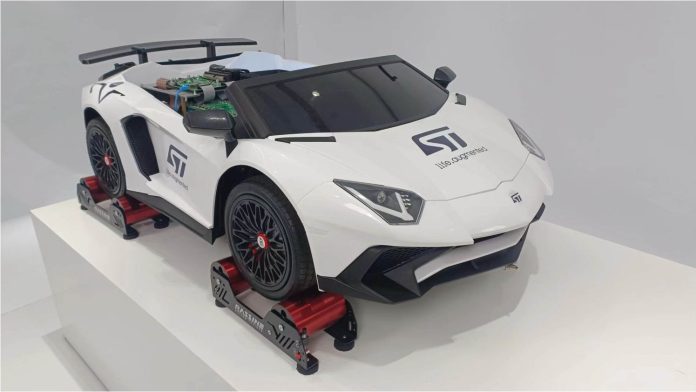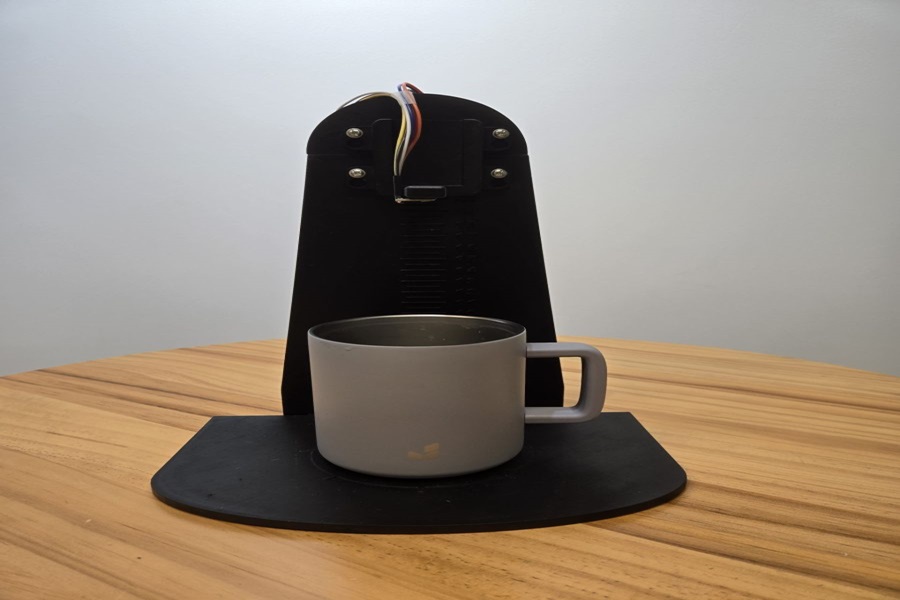Author: STMicroelectronics
What questions will ST answer at electronica China 2024? Too often, attendees don’t take the time to step back and ask what challenges they would need to solve or think of the answers they should seek. It’s easy to get caught up in the event’s excitement and the flood of information. That’s why we decided to highlight some of the questions our readers may have and provide answers. Hence, even if members of our community can’t physically attend this event, they will still get tools and ideas that can help them find innovations and efficiency.
What would it take to build an ST car? A powertrain domain controller!

Attendees at electronica China 2024 will probably be surprised when they see the ST car, a small mock-up electric vehicle. The demo aims to show a modern approach to domain controllers by grouping multiple systems under one host MCU. Thanks to its multiple cores and virtualization capabilities, the Stellar P3 can support mid-level integrated electrification applications, while the Stellar P6 could run even more highly integrated electrification systems. We also increased the battery management system from a previous demo to support 800 V and worked to create an ASIL-D-ready system. In a nutshell, we show how ST solution advantages can help design teams shorten the development cycle and gain market shares.
In our demo car, the host MCU runs the onboard charger and DC-DC converter, the vehicle control unit, which is responsible for the relays, pumps, charger-lock, and more, the battery management system, and the inverter. Additionally, we provide solutions for engine management systems (EMS), transmission control units (TCU), thermal management systems, and more. Integrators can focus on the application instead of worrying about how the electronics will work together. The platform we are showing is continuously evolving, and we’ll release a new version before the end of the year. In the meantime, we continue to show how car makers can take advantage of the computational throughput and safety features of a device like the Stellar P.
As readers of the blog will remember from our power liftgate demo, the industry is looking into consolidating resources. It is one of the simplest ways to bring new features to mainstream vehicles. It simplifies development and helps reduce costs by sourcing more components from the same company, which significantly helps with overall pricing. The ST mock-up vehicle is another example of how ST is helping makers jump on the bandwagon. We also try to make critical technologies more accessible, like over-the-air updates, thanks to our phase-change memory, which is capable of increasing its capacity to enable flashing a new firmware without requiring hardware partitioning like A/B memory banks.
How do you promote sustainability? With integrated hybrid photovoltaic, energy storage, and charging solutions!
Too often, cities know they need to implement new energy strategies that combine solar panels, energy storage, and charging solutions. Moreover, car makers must learn to utilize these new systems, which can lead to a lack of cohesion or slow adoption. Consequently, ST is featuring an energy storage and management solution demo at electronica China 2024 that shows how our devices can help deliver power across infrastructures. It uses our third-generation SiC MOSFETS, enhancement mode PowerGaN transistors, high-performance MCUs, galvanic isolation gate drivers, and more to control and protect the entire system. Put simply, it’s about achieving higher efficiency, better stability, and greater reliability than the industry traditionally offers today.
E-meter
It starts with a power line and hybrid platform for e-meters that uses the STM32WL3, which includes two radios and one ultra-low power wireless MCU. The board also comes with the ST8500 programmable powerline modem and the STLD1 driver.
Micro-inverter
Many charging solutions rely on solar energy to further improve their environmental impact. Hence, an efficient micro-inverter that transforms what solar panels capture is critical. That’s why we are featuring a micro-inverter powered by our MASTERGAN1L solution, which is key to such a small factor thanks to its wide bandgap. Additionally, the module runs on an STM32G4, thanks to its high-resolution timers and high-precision ADCs.
Main inverter
To ensure greater efficiency when converting solar energy and distributing it, ST developed an inverter powered by silicon carbide: the SCT070W120G3-4AG and SCT055W65G3-4AG. After 25 years of innovations, ST can offer a 15kW three-phase three-level Active Front End bidirectional PFC converter. We even provide design tools like STPOWER Studio to help engineers design their PCBs quickly.
Battery charging
To send power from the charger to the battery, we offer a couple of systems, both running on an STM32G4. We even provide the STGAP2SICS for SiC MOSFETs, which implements an under-voltage lockout (UVLO) to ensure the safe, stable, and efficient operation of the entire system.
Battery management
Finally, to manage the energy stored in the car’s batteries, we offer the AEK-POW-BMS63EN, a development platform for the L9963E that makes battery management solutions vastly more accessible. Indeed, thanks to its battery holder, its ability to daisy chain up to 31 nodes in minutes, its board dedicated to isolation, and software that helps take advantage of its features, engineers can significantly reduce their time to market.
How do you detect the orientation of a cup and its liquid level in a short time? Smart Cup Detection

It’s a complex problem because it requires fast computing, vision, and other sensors to determine where the cup is and how much liquid is in it. Or, one could just use the VL53L7CH or VL53L8CH time-of-flight sensors from ST. That’s what we will show at electronica China 2024 with a demo of a simulated coffee machine that can measure 64 different zones, represent the data in a compact normalized histogram, and enable the creation of a machine learning algorithm capable of detecting if the cup is upside down, off-center, absent, its height, and how much liquid it contains.
The only significant difference between the VL53L7CH and VL53L8CH is that the former has greater coverage and field of view for applications that monitor a larger area. The demo uses an X-NUCLEO-53L8A1 development board and a 3D-printed housing shaped like a coffee machine. Put simply, it showcases how integrators can create a complex detection system with few components and processing requirements, making this technology highly accessible.








